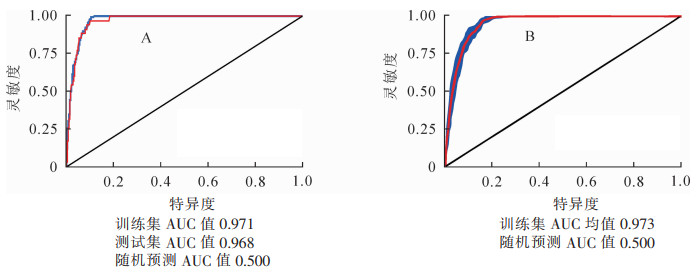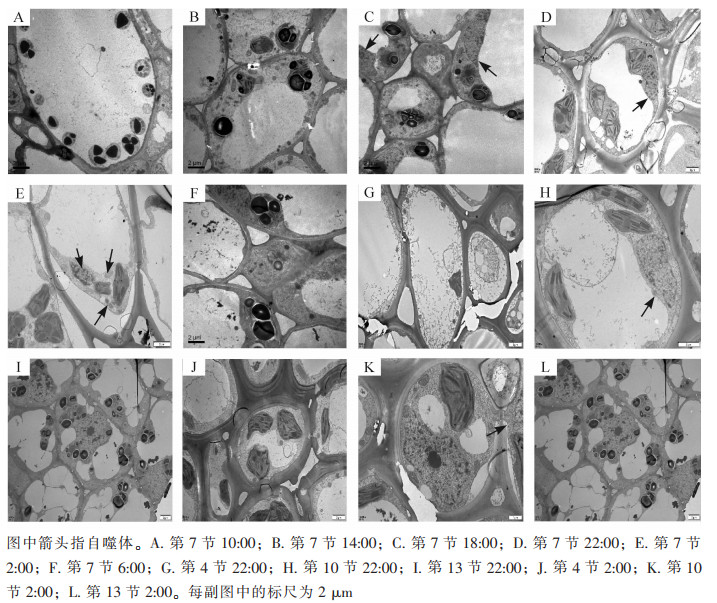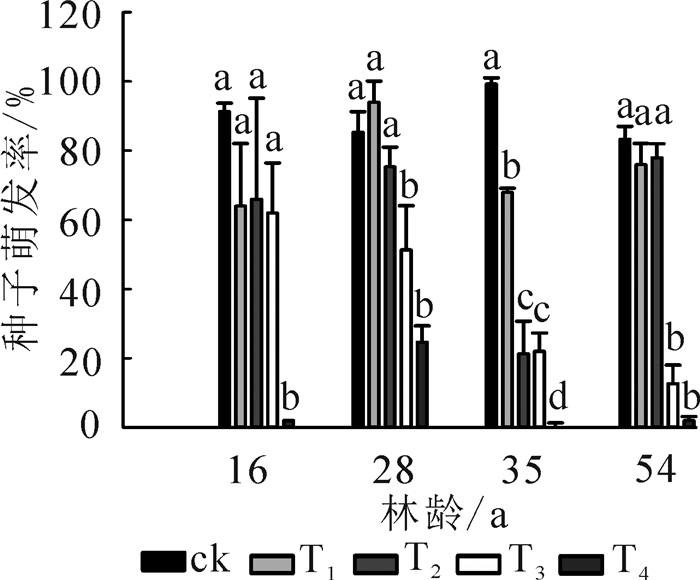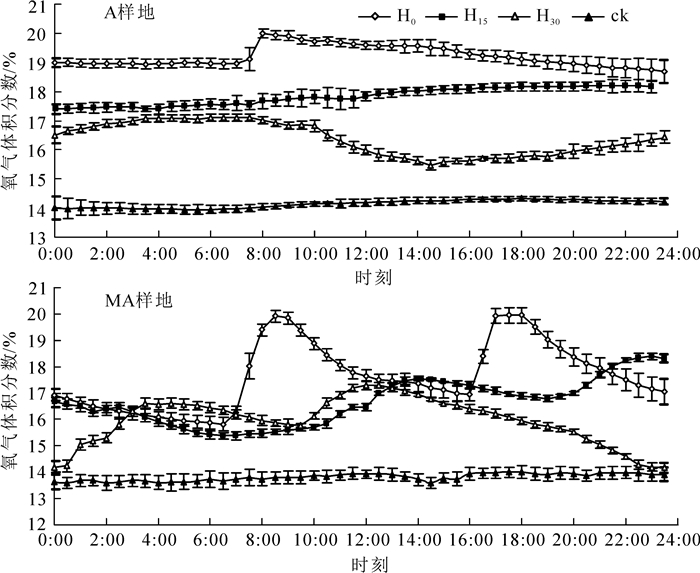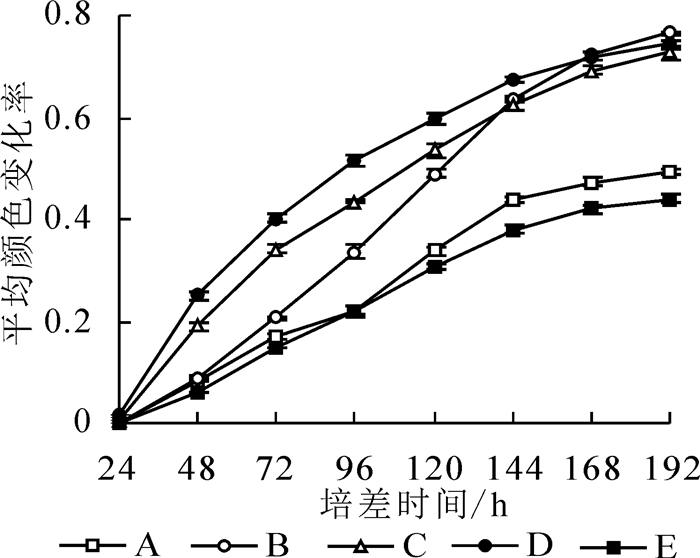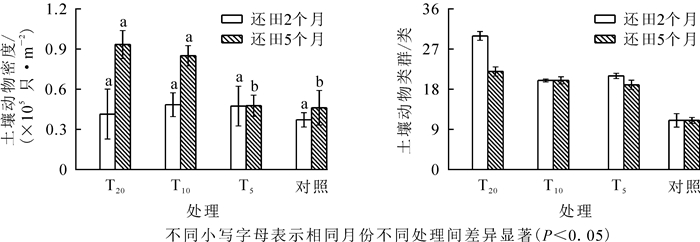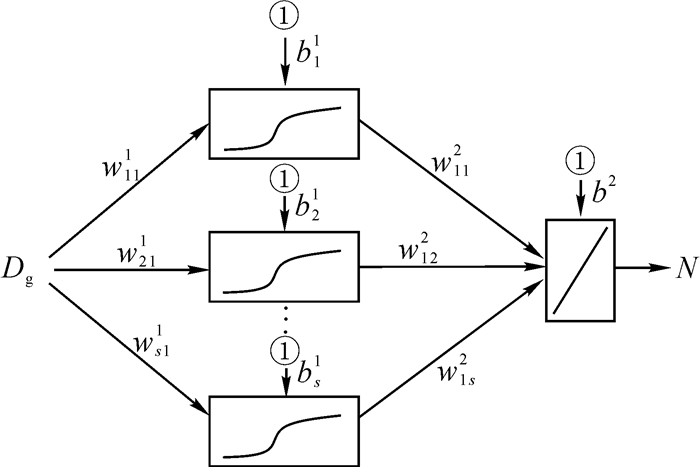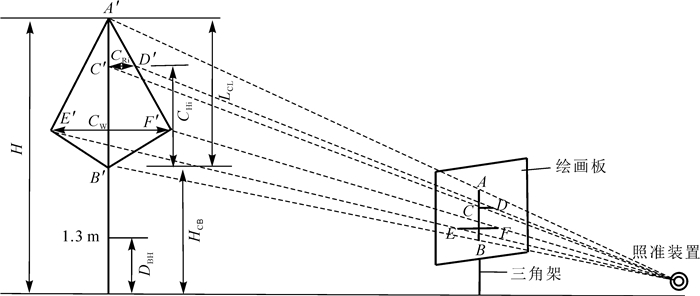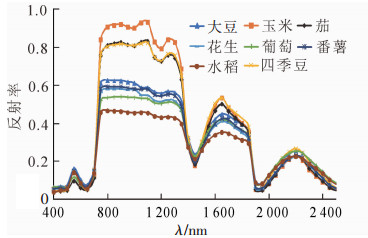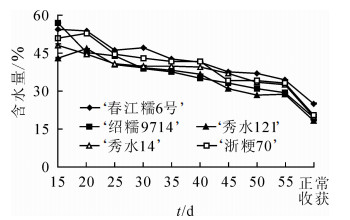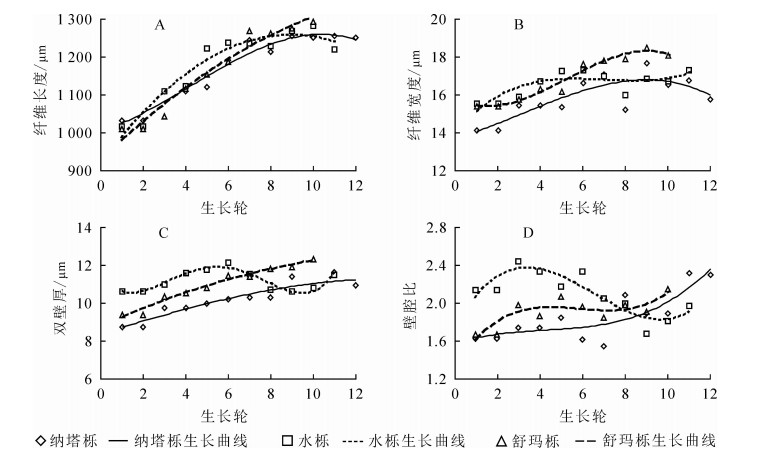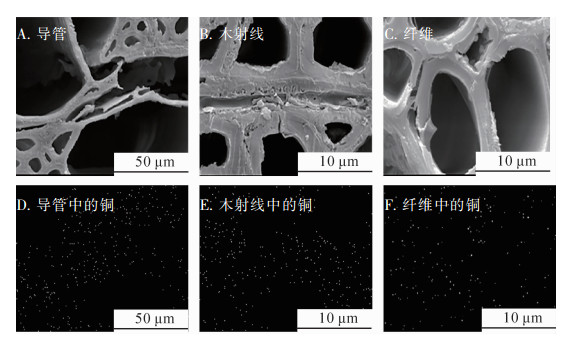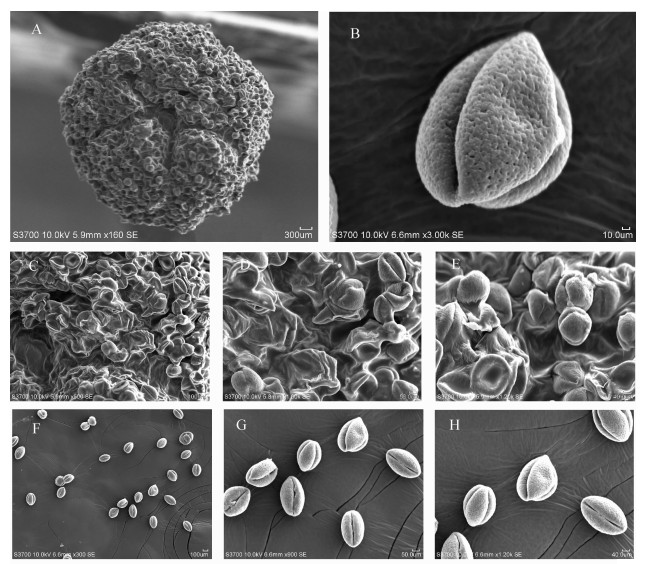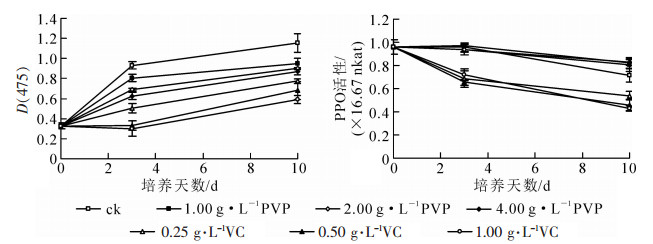2020 Vol. 37, No. 1
column
2020, 37(1): 1-8.
doi: 10.11833/j.issn.2095-0756.2020.01.001
Abstract:
Objective The aim is to scientifically and rationally develop protective measures for Liriodendron chinense. Method Maximum Entropy Model (MaxEnt) and Geographic Information System (ArcGIS)were adopted to predict the potential distribution areas of L. chinense, and to explore the dominant environmental factors of L. chinense under various climate change scenarios. Result The mean AUC of the training data was 0.973, and the AUC of the test data reached 0.953, indicating that MaxEnt model had a good predicting ability. The annual precipitation, precipitation of wettest quarter, min temperature of coldest month, precipitation of seasonality and monthly mean temperature difference were predicted to be five main factors affecting the distribution of L. chinense, with a total contribution rate of over 80%. The intensity of human activities was 2.3%. Then MaxEnt model was imported into GIS to classify the suitable areas, and the results showed that the highly suitable distribution areas of L. chinense ranged from south of Daba Mountain to the north-central part of Guizhou in Southwest China; its southernmost part extended to the hilly area in the southern part of Zhejiang Province and the northern part of Fujian Province while its northernmost part reached the Tianmu Mountain in East China, which was similar with the investigation before. Meanwhile, the distribution of L. chinense in China under different RCP scenarios of the 2050s and 2070s was simulated. The study showed that the potential distribution area would move to higher latitudes, and the area would remain stable and then decline with the growth of the year. In 2070s under the climate scenario of RCP 8.5, the distribution area of L. chinense would decrease by 5.3% compared with the current period. These were consistent with the results of previous studies on the reduction of biogenic suitable area in the context of global warming. Conclusion The predictions indicated that climate change would affect the distribution of L. chinense populations, and would provide a reference for the future cultivation and ex-situ conservation of L. chinense too.
2020, 37(1): 9-17.
doi: 10.11833/j.issn.2095-0756.2020.01.002
Abstract:
Objective The research aim is to study the dynamic evolution process of Qilu Lake and its watershed landscape ecological risks under the background of climate change. Method The lake boundary was extracted based on eight time series Landsat images from 1975 to 2015, and three watershed landscape classification data were interpreted. The dynamic evolution of Qilu Lake was studied from the change of lake area, lake shape and the lake centroid. The ecological risk assessment model was established by dividing ecological risk sampling plots, and the landscape ecological risk of Qilu Lake Basin was quantitatively analyzed. Result (1) Over the last 30 years, the landscape structure of Qilu Lake Basin has changed obviously; the area of construction land and beach wetland has increased significantly; the area of farmland, forest land and water area has decreased continuously, and the area of unused land has not changed much; (2) Over the last 40 years, Qilu Lake has been in a continuous shrinking state, and the water area in 2015 is only 56.05% of that in the largest year (1985); Qilu Lake is characterized by continuous and complex changes in shape, the most obvious change is at the entrance of rivers to lake in the west and south part, and the smallest change in the east part; The centroid of Qilu Lake mainly migrates to the northeast, and there is a 1 242 m gap between the centroid in 1975 and that in 2015. The results of ecological risk assessment indicates that the main ecological risk is in lower grade, accounting for 26.75%-35.09% between 1985-2015; The average ecological risk has increased from 0.957 8 to 1.013 9 between 1985-2015, indicating increasing ecological risks. Conclusion The spatial distribution of ecological risk in Qilu Lake Basin has obvious aggregation and spatial heterogeneity. The high ecological risk mainly lies in the Qilu Lake, the low ecological risk mainly in the lake basin, and the other ecological risks mainly in block or band along the lake basin and lake.
2020, 37(1): 18-26.
doi: 10.11833/j.issn.2095-0756.2020.01.003
Abstract:
Objective The similarities, differences and inducements of nutrient distribution between plantation and secondary forest were analyzed, in order to master the situation and dynamic law of nutrients in different parts. Method The leaves, roots and soil (0-20 cm) of the Castanopsis hystrix plantation(CHP), the Michelin chapensis plantation(MCP) and the secondary forest(SF) were investigated in the southern subtropical region of northern Guangdong. Total C, total N and total P concentrations of litter, roots and soil were measured. Result (1) There was no significant difference in the concentrations of C and P in the litter among the three stands (P>0.05), but the concentrations of litter N in the CHP were significantly higher than those in MCP and the secondary forest. The roots of C, N and P concentrations were significantly different among the three stands (P < 0.05) and both N and P concentrations were MCP > SF > CHP. The C, N, and P concentrations in the soil were significantly different and both were CHP > SF > MCP. (2) All the three stands showed a C/N ratios of roots > litter > soil; while CSP and the secondary forest showed a C/P ratios of roots > litter > soil. C/P ratios was litter > root > soil in the MCP. N/P ratios was litter > root > soil in the three stands. C/N, C/P, and N/P ratios were not significantly different among the three types of forests; C/N and C/P ratios of litter were highest in MCP. All C/N and C/P ratios of roots were CHP > SF > MCP. (3) The N and P concentrations of roots in CSP, the N and P concentrations of litter and roots in MCP and the secondary forest displayed a significantly positive correlation (P < 0.05). There was no correlation between C/N and N/P ratios in litter and roots of the three stands (P>0.05). There was a significant positive correlation between C/P and N/P ratios in litter, roots and soil of CHP and MCP (P < 0.05), while C/P and N/P ratios of the secondary forest only showed a significant positive correlation (P < 0.05) between litter and soil. Conclusion Roots of different stands displayed different laws of soil nutrient absorption. Compared with the national average value of soil nutrients, the study area showed a pattern of high N and low P, indicating that local soil was limited by P. Therefore, P can be appropriately applied according to demand to improve soil nutrient quality.
2020, 37(1): 27-35.
doi: 10.11833/j.issn.2095-0756.2020.01.004
Abstract:
Objective One of the main tasks of reconstruction of low-function forest of Beijing-Tianjin Sandstorm Source Control Ⅱ Project is to increase species diversity indices. The aim is to explore and assess the effects of various environmental factors on the species diversity indices of understory in low-function forests in Beijing. Method 35 low-function Platycladus orientalis forest plots were investigated and species diversity indices were also calculated. The Maximum Entropy model was used to study the relationship between 10 environmental variables (such as soil properties and topographic factors) and understory species diversity indices of low-function cypress forests, analyze the effects of site conditions on understory biodiversity of cypress forest. Result (1) The main environmental variables affecting the species diversity indices were altitude, slope direction, soil total phosphorus content, slope and soil total potassium content, and the cumulative contribution rate of the five indices reached 93.8%; (2) The probability higher than filter value of species diversity under low-function cypress forests increased from 0.354 to 0.431, 0.654 and 0.379 by improving soil total phosphorus, total potassium content and micro-topography, and the distribution probability was increased to 0.738 after implementing the above three measures. The total phosphorus, total potassium content of soil in classes of low-function cypress forest and slope measures adopted separately and simultaneously can help improve diversity. Conclusion Improvement of site conditions can increase the species diversity indices of low-function cypress forest.
2020, 37(1): 36-42.
doi: 10.11833/j.issn.2095-0756.2020.01.005
Abstract:
Objective This study aims to explore the way of forest rehabilitation, improve the forest structure, maintain biodiversity and provide a reference for further research on plant community characteristics of Cunninghamia lanceolata forests. Method A field investigation was conducted on the plant community characteristics of the second generation young C. lanceolata sprout forest in Xikou Village, Lin'an, Zhejiang Province in October 2017. Result The data analysis showed that there were 104 species of plants in the young C. lanceolata sprout forest in Xikou Village, including 14 species of arbor layer plants, 58 species of shrub layer plants, and 41 species of herbaceous layer plants. The dominant vegetation constituted the C. lanceolata-Rubus hirsutus-Pteridium aquilinum community. The species richness index, the Simpson index, the Shannon-Wiener index, and the Pielou index were all shrub layer > herbal layer > tree layer. Except for some dominant species, most plant species of understory vegetation were small in number and sparsely distributed. Conclusion It is recommended that needs of local farmers and communities should be taken into consideration to improve the heterogeneity of forest ecosystem species, structure and resource use, and local native broad-leaved tree species and suitable broad-leaved tree species should be selected for replanting to form mixed forests, supplemented by scientific cultivation measures.
2020, 37(1): 43-50.
doi: 10.11833/j.issn.2095-0756.2020.01.006
Abstract:
Objective The aim is to discuss the relationship between rapid growth of stems of Phyllostachys edulis and gene expression of PeATG1 and PeATG4. Method Stems of P. edulis shoots were used as materials, the autophagic activity at different periods (10:00, 14:00, 18:00, 22:00, 2:00, and 6:00) and in different parts (internodes 4, 7, 10 and 13) was monitored by transmission electron microscope (TEM), and the expression of PeATG1 and PeATG4 genes in the 7th internode was determined by real-time fluorescence quantitative polymerase chain reaction (qRT-PCR). Result The autophagosomes were observed at 22:00 and 2:00 in internodes 7 and 10 during 24 h monitoring, while no autophagosome was observed in internodes 4 or 13. The expression of PeATG1 and PeATG4 enhanced at night. The expression of PeATG1 was highest at 22:00, which was 3.0-fold and 1.3-fold of 18:00 and 6:00 respectively (P < 0.05). The expression of PeATG4 was highest at 2:00, which was 1.7-fold and 1.6-fold of 18:00 and 6:00 respectively (P < 0.05). Conclusion The research showed significant differences in growth and development of P. edulis at different stages. Autophagosomes were formed at night, and the expressions of PeATG1 and PeATG4 were high, which resulted in rapid growth of stems.
2020, 37(1): 51-59.
doi: 10.11833/j.issn.2095-0756.2020.01.007
Abstract:
Objective The aim is to explore the dwarf method and clarify preliminarily the growth and photosynthetic mechanism of Dendrocalamus oldhami, effects of bamboo shoot truncation on morphology, survival rate, chlorophyll content and chlorophyll fluorescence parameters of D. oldhami. Method Different heights H1(60 cm), H2(90 cm), H3(120 cm), H4(150 cm), H5(180 cm) of bamboo shoots at peak period in Youxi County, Fujian Province were used as test materials and bamboo shoots without truncation as the control group. Result (1) Morphological characteristics changed significantly after bamboo shoot truncation treatment, and there was a significant negative correlation between plant height and bamboo shoot height before truncation (R2=0.90, P < 0.01). Plant height of H5 after treatment was 539.40 cm and that of the control group was 234.70 cm, reducing by 56.49%. With bamboo shoot truncation treatment, the under branch height, internode number and branch rate decreased significantly while the length of the main branch increased. Survival rate of D. oldhami ranged from 82.14% to 85.71%, and no significant difference in survival rate was observed (P>0.05).(2) The chlorophyll a, chlorophyll b and total chlorophyll of D. oldhami increased while chlorophyll a/b decreased. (3) There was no significant difference in initial fluorescence (Fo) between the experiment groups and the control group. With the decrease of plant height, the PS Ⅱ maximal photochemical efficiency(Fv/Fm) and photochemical quenching coefficient (qP) enhanced, while the nonphotochemical quenching coefficient (qNP) reduced. The maximum values of electron transport rate (ETR) and PS Ⅱ actual photochemical efficiency(Yield) were achieved under H5 treatment, increasing by 48.63% and 42.17% respectively compared with the control group. (4) Pearson correlation analysis showed that plant height was negatively correlated with total chlorophyll and chlorophyll fluorescence parameters Fv/Fm, Yield and ETR, and positively correlated with chlorophyll a/b and qNP. Conclusion It could be concluded that 180 cm was the optimal bamboo shoot truncation treatment, which helped control plant height and improve photochemical effect.
2020, 37(1): 60-68.
doi: 10.11833/j.issn.2095-0756.2020.01.008
Abstract:
Objective The aim is to understand the difficulty of seedling breeding and to solve the natrual regeneration problem in declined stands of Pinus sylvestris var. mongolica sandy-fixation plantation, response characteristics of the seed germination and seedling growth as well as resistance to drought stress were mined. Method An indoor control method was used for drought stress, with PEG 6000 (polyethylene glycol) solution concentrations (in MPa) and treatments being 0 (ck), -0.054 (T1), -0.177 (T2), -0.393 (T3), and -0.735 (T4). Seeds of P. sylvestris var. mongolica for different stand ages from the south margin of Horqin Sandy Land were selected as study materials, with characteristics of seed germination and seedling growth were measured. Drought resistance of P. sylvestris var. mongolica were analyzed by using principal component analysis and membership function method. Result Seed germination percentages and seed germination rates declined with an increase in time before germination in drought stress. Seed germination duration shortened significantly for T4 (P < 0.05). Differences existed between stand ages and responses of seed germination characteristics to drought stress. With strong drought stress, seed duration was extended for younger forests, but seeds of older forests finished germination rapidly. The threshold value of response to drought stress for seed germination percentage of 28 year-old P. sylvestris var. mongolica was maximal. Seedling growth relative value declined with drought stress and increased firstly then decreased as drought stress increased. Embryo length and hypocotyl diameter decreased overall as drought stress increased, and radicle length increased with drought stress. The membership function method showed that drought tolerance for different forest ages for P. sylvestris var. mongolica was in the order of 16 a > 28 a > 35 a > 54 a. Responses to drought stress during the germination stage included reduction in germination percentage, delayed germination, extended duration of germination time, slowed seed germination rate and increased radicle growth. Conclusion Drought tolerance of P. sylvestris var. mongolica during seed germination stage decreased as stand age increased, making it suitable to select seeds during the early production stage to promote natural regeneration of P. sylvestris var. mongolica sandy-fixation plantation.
2020, 37(1): 69-75.
doi: 10.11833/j.issn.2095-0756.2020.01.009
Abstract:
Objective Limitations to growth and biomass production are expected due to low soil oxygen content. To increase soil oxygen content of Phyllostachys violascens stands under various managements and to provide a new technique for soil aeration and sustainable management of P. violascens are necessary. Method A pipe-buried aeration method was adopted. An in-situ measurement was used to detect soil oxygen content of various managed bamboo stands. There are split-plot design with four treatments (M:mulching without aeration, MA:mulching with aeration, A:no mulching with aeration, and ck:no mulching without aeration) and 3 replications. We studied the response of soil oxygen content after pipe-buried aeration to four levels of soil depth(V10, V20, V30 and V40, respectively)and four levels of distance to pipe(H15, H30, H45 and H60, respectively). Result The mulching technique could lead to soil hypoxia, but the pipe-buried aeration improved soil oxygen significantly(P < 0.05). In the soil layer below 40 cm, soil oxygen content increased 2.20%-5.25% compared to the control(P < 0.05). For the vertical level in various layers, soil oxygen content increased 0.78%-4.98%(P < 0.05). When the mulching technique was adopted, the pipe-buried aeration method increased soil oxygen content 1.26%-4.71%(P < 0.05). When water saturated, the aeration method increased soil oxygen content 0.69%-7.58%(P < 0.05). Conclusion The pipe-buried aeration method was an effective measure for increasing bamboo soil oxygen content, and it could be promising with sustainable bamboo management.
2020, 37(1): 76-84.
doi: 10.11833/j.issn.2095-0756.2020.01.010
Abstract:
Objective To provide theoretical basis for the sustainable development of Cunninghamia lanceolata public welfare forest, a study is conducted of the response of soil microbial carbon metabolism to stand density and the relationship between soil physico-chemical properties and microbial carbon metabolism. Method With the Biolog-ECO method employed, five 38-year-old C. lanceolata plantations with various densities were selected in Dagang mountain to study the functional diversity of carbon-source metabolism. Result (1) When the survival density of C. lanceolata was 2 600-4 600 plants·hm-2, the average color change rate (AWCD) which is reflective of the diversity of soil microbial metabolic function was higher and such density range comes with a high soil microbial diversity, which contributes to the soil organic matter decomposition and soil nutrients' transformation and accumulation. (2) The utilization amount of six carbon sources by soil microorganisms varies for C. lanceolata plantations of different densities. When the density was 2 600-4 600 plants·hm-2, the main carbon sources were carbohydrates, followed by carboxylic acids and amino acids. When the density was lower or higher, the soil microorganisms utilized more carboxylic acids than carbohydrates. It is shown in the principal component analysis that α-D-lactose contributed the greatest to the utilization of soil microorganisms and was the most utilized substance in C. lanceolata plantation. It is demonstrated in the correlation analysis that the total nitrogen and alkali-hydrolyzable nitrogen were significantly correlated with microbial diversity, and were the decisive factors for microbial carbon utilization. Conclusion With both the microbial carbon metabolism and soil physico-chemical properties taken into consideration, it was found that the density of 2 600 plants·hm-2 was the most suitable for the sustainable development of C. lanceolata plantation.
2020, 37(1): 85-92.
doi: 10.11833/j.issn.2095-0756.2020.01.011
Abstract:
Objective The aim is to reveal the effects of different straw returning quantities on cropland soil fauna community. Method An experiment with four types of straw returning quantities[0.8(T20), 0.4(T10), 0.2(T5) kg·m-2 and no straw returning(ck)], were carried out in 5 m×5 m quadrats. Hand-picking method and dry and wet funnel separation method were used in the experiment. Result The total soil animals 1 194 were captured in this survey, belonging to 3 phyla, 11 classes, 19 orders and 44 families. The average density of soil animals was 4.45×105 ind·m-2. The density and variety of soil animals in the sample land increased significantly after straw returning(P < 0.05). The varieties were ranked as follows:T20(37) > T10(30) > T5(28) > ck(17). The vertical distribution of soil fauna community was obvious, and the density of soil fauna decreased with the deepening of soil layer, which had obvious surface aggregation. Two months after straw returning, T20 had the highest diversity index, evenness index and species richness. Five months after straw returning, T10 had the highest predominant index. Conclusion 0.8 kg·m-2 straw returning quantity is suggested.
2020, 37(1): 93-99.
doi: 10.11833/j.issn.2095-0756.2020.01.012
Abstract:
Objective The aim is to improve control of Dendrolimus punctatus larval occurrence, and to select a suitable prediction model by increasing prediction accuracy through a catastrophe prediction method. Method The prediction model GM(1, 1) for D. punctatus was used over 28 years from 1989 to 2016 in Qianshan County, Anhui Province. Result The GM(1, 1) cataclysmic prediction model for the overwintering generation of D. punctatus was as follows:\begin{document}${\hat z^{(1)}}$\end{document} \begin{document}${\hat z^{(1)}}$\end{document} \begin{document}${\hat z^{(1)}}$\end{document} \begin{document}${\hat z^{(1)}}$\end{document} Conclusion Thus, the catastrophe prediction method could be an ideal method for predicting the occurrence of larval cataclysm with D. punctatus.
2020, 37(1): 100-104.
doi: 10.11833/j.issn.2095-0756.2020.01.013
Abstract:
Objective To provide reference for wood production and quality improvement management measures, a study was conducted of the density index model of the Pinus massoniana plantation. Method Taking the P. massoniana plantation in the Boshan Forest Form in Henan Province as the research object with data collected of 147 standard plots, artifical neural network (ANN) model of the stand density index was established taking stand DBH as input vector and the plant number density as output vector and compared with Reineke's stand density index model. Result (1) The maximum density slope b of the P. massoniana plantation in the Boshan Forest Form was -1.516 3, the standardized mean DBH was 14 cm, the fitting accuracy of Reineke's stand density index model was 92.11%, and the effect of t test was significant. (2) The fitting accuracy of ANN model was 92.57% and the mean square error (MSE) was 0.001 469 7. (3)Either with Reineke density index or ANN technique employed, the young forest group demonstrate lower accuracy in fitting the variation trends of number density against that of stand DBH, which attributes to the smaller data of the young forest group. Conclusion The above established model was expected to provide reference for the operational decisions of the P. massoniana plantation in the Boshan Forest Form in Henan Province.
2020, 37(1): 105-113.
doi: 10.11833/j.issn.2095-0756.2020.01.014
Abstract:
Objective Forest site quality evaluation refers to the judgement and prediction of site suitability or potential productivity. The aim is to establish a site quality evaluation model of Cunninghamia lanceolata plantaion. Method A new site quality evaluation index, the maximum growth rate index of DBH, was proposed. Taken as the site evaluation index, and based on the National Forest Inventory(NFI) data of Zhejiang Province from 1994 to 2009, the maximum DBH growth rate for 529 permenant plots of C. lanceolata plantations was extracted from the NFI time series data as the site quality evaluation index of C. lanceolata plantations. Integrated with readily available site factors such as latitude, altitude, slope position, slope direction, slope, soil types, etc., and based on the quantitative theory Ⅰ method, a site quality evaluation model of C. lanceolata plantations was established. Result The statistical test value of the model is 14.723, and the complex correlation coefficient of the model is 0.606, which reaches a very significant level, and the effect of the model is satisfactory. The maximum DBH growth rate based on NFI is an appropriate index for site quality evaluation. The contribution of site factors such as slope direction, slope position, soil type, slope, latitude and altitude to the maximum growth rate of DBH decreases sequentially. Conclusion Based on NFI and quantitative theory Ⅰ, the overall index of site quality evaluation model of C. lanceolata plantations in Zhejiang Province is reasonable. It overcomes the dependence of traditional site quality evaluation on age, and can effectively use NFI historical data, which is suitable for forests of the same age and different age. The site quality evaluation model can effectively evaluate the site quality of the study area. It can not only evaluate the productivity of existing C. lanceolata plantations, but also predict the potential productivity of non-forest land.
2020, 37(1): 114-121.
doi: 10.11833/j.issn.2095-0756.2020.01.015
Abstract:
Objective Crown profile models can not only describe the radius at any position of the crown, but also predict the crown volume and the aboveground biomass. This paper developed a simultaneous equation system of crown profile model and crown volume prediction with the same set of model parameters using the data of 413 trees in 98 sample plots of Cunninghamia lanceolata plantation in Fujian Province. Method Four commonly used and integral crown profile models were selected, and the crown volume prediction models were derived by using integral method. The model equations were set up in pairs to establish the simultaneous equations of tree crown profile and volume compatibility, and the seemingly unrelated regression (SUR) process in SAS software module was used to estimate the parameters of the simultaneous equations model system. In order to eliminate the heteroscedasticity of the model, the weighted regression method was used to fit the model. The fitting accuracy and prediction accuracy of different model systems were compared and analyzed. Result The simultaneous equations based on model 4 had high fitting accuracy and good prediction performance. The fitting accuracy of the crown profile model and crown volume model reached 0.829 5 and 0.861 0 respectively, and the accuracy of prediction was 0.803 9 and 0.856 0 respectively. The collinearity problem of simultaneous equations was solved by the SUR method, and the heteroscedasticity in the model was eliminated to some extent by the weighted regression method. Conclusion The consistency model equation of crown profile-volume constructed in this paper can be used to derive the crown profile and volume model, which provides a theoretical basis for estimating the biomass of the aboveground part of trees.
2020, 37(1): 122-128.
doi: 10.11833/j.issn.2095-0756.2020.01.016
Abstract:
Objective The aim is to provide a new idea for tree species suitability evaluation, provide a support for scientific afforestation, and explore the relationship between site factors and tree suitability. Method Take a Eucalyptus plantation in Guangxi as the research object, 1 883 forest resource sub-compartment survey data of Guangxi state-owned Gaofeng Forest Farm were selected. Then, Naive Bayesian, Support Vector Machine, and Random Forest algorithm were used to evaluate the suitability of tree species and to construct a suitability classification model for Eucalyptus. Eleven site factors, namely, landform type, elevation, aspect, slope position, slope, litter thickness, humus layer thickness, soil layer thickness, gravel content, parent material, and soil type were input with the output being Eucalyptus suitability. Result The fitting accuracy of the three models was 63.18% for Naive Bayesian, 69.73% for Support Vector Machine, and 78.03% for Random Forest algorithm with a generalization accuracy of 64.33% for Naive Bayesian, 67.93% for Support Vector Machine, and 78.18% for Random Forest algorithm. The order of importance for site factors was elevation > soil layer thickness > aspect > slope > gravel content > litter thickness > slope position > humus layer thickness > soil type > landform type > parent material. Overall, Eucalyptus was more suitable for growth in areas of 200-350 m altitude and 80-100 cm soil layer thickness. Conclusion Thus, machine learning classification algorithms could be used to fit the non-linear relationship between tree species suitability and site factors.
2020, 37(1): 129-135.
doi: 10.11833/j.issn.2095-0756.2020.01.017
Abstract:
Objective Panax notoginseng, a kind of Chinese herbal medicine with high economic value and a close relationship to price fluctuation, could be very meaningful for a government's agricultural management departments to scientifically guide its planting scale and determine the price of macro controls. The aim is to obtain P. notoginseng planting information in real time and accurately. Method Four counties which mainly produce P. notoginseng in Wenshan Prefecture were taken as the research area. According to the characteristics of P. notoginseng growth, environment construction expert decision tree, the decision tree classification method to extract P. notoginseng shade patches and a method of refining processing on classification results through GIS spatial analysis, was used. Based on these, the area of P. notoginseng from the Gaofen-1 (GF-1) remote sensing images with 16 m resolution was extracted, and the extracted results were refined. Then, Google image was used, instead of field mapping, as a method to verify the area and classification accuracy of the image in order to obtain the accuracy and reliability of identification and evaluation of the Shade shed area for P. notoginseng. Result The accuracy of decision tree classification method is 87%, and that of visual interpretation method is 99%. The area accuracy of decision tree classification can reach 80%. Conclusion Compared with the traditional method of using high-resolution commercial images and artificial drawing spots, this method of extracting the P. notoginseng area could quickly determine P. notoginseng planting resources with higher accuracy, thereby providing basic data and effective technical methods for scientific supervision and value estimation of locally cultivated agricultural products.
2020, 37(1): 136-142.
doi: 10.11833/j.issn.2095-0756.2020.01.018
Abstract:
Objective The difference in hyperspectral reflectance of different crops is small, the subtle differences of the spectral feature enable identification of different crops. This aim is to find an effective way to select spectral feature bands from hundreds of bands and indentify different crops. Method The random forest method and the traditional methods were applied to analyze the reflective hyperspectra of 8 typical crops in Hangzhou, the spectral feature bands were extracted and the crops were distinguished. The traditional methods included first-order derivative, second-order derivative, logarithm of reciprocal, and the de-enveloping line method. Result The reflective hyperspectra of the different crops and the results processed by traditional methods were limited in crops identification, the spectral feature extracted by these traditional ways could not distinguish all of 8 crops. The random forest method was the most effective one for extraction of the spectral feature. Conclusion The extracted spectral feature bands were 550, 2 490, 370, 770, 560, 380, 540, 530, 570 and 350 nm, which not only were applied effectively to distinguish 8 crops, but also reflected the biochemical properties of the crops, which made sense to explain the classification with hyperspectral remote sensing.The random forest method fully demonstrated the advantages of hyperspectral remote sensing for crop identification and spectral feature extraction. The random forest classification can provide reference for large-scale crop fine classification with hyperspectral image.
2020, 37(1): 143-150.
doi: 10.11833/j.issn.2095-0756.2020.01.019
Abstract:
Objective The aim is to quickly perform the difference among pumpkin cultivars, a suitable evaluation system was established for pumpkin. Method 10 pumpkin cultivars were used to determine 30 indicators relevant to plant growth, fruit, texture, seed, as well as quality characteristics. Biological characteristics were obtained by ruler etc and analysis of nutritional quality were performed according to the methods from references. Each sample was analyzed five times and each experiment was conducted in five repetition (n=5). The results were expressed as means ±SE. Statistical comparisons were made by one-way analysis of variance (ANOVA) followed by Duncan's multiple range test (P=0.05). A principal component analysis was used for a comprehensive evaluation of the pumpkin cultivars and was constructed by taking the eigenvalues corresponding to the principal components and the ratio of a single principal component to the extracted principal components. Result There are strong differences among pumpkin cultivars. The first pistillate flower node of 'Doll' was earlier than that of others. Also, the branchiness of 'Red Chestnut' and 'NGMB' were strong. Although the chlorophyll content of 'Black Japan' was lowest, petiole diameter and leaf size of 'Black Japan' were higher than those of the other nine cultivars. Chlorophyll content of 'Rising Sun' and 'Jin Li' was highest. As for soluble sugar and starch content, 'Jin Li' was the best among all pumpkin cultivars. The highest chroma value and lowest chroma angle were found in 'Red Chestnut' which had the largest circumference and the most important single fruit. The flesh of the Cream series and 'Yellow Wolf' was relatively hard, and the toughness was very different for 'Cream NL1', 'Cream Y', and 'Yellow Wolf'. The seed number in 'Rising Sun' was highest, but in the cream pumpkin series the seed number was small. The seed weight of Red Chestnut was heaviest; whereas, the longitudinal diameter and thickness of the seeds were much larger than other cultivars. The principal component analysis extracted a total of five principal components with a cumulative contribution rate of 87.240%. Conclusion The best comprehensive score was found in 'Red Chestnut'; whereas, the worst was found in 'Cream NL1'. This study provided a theoretical reference for rapid screening of germplasm resources and pumpkin breeding.
2020, 37(1): 151-157.
doi: 10.11833/j.issn.2095-0756.2020.01.020
Abstract:
Objective The aim is to explore the effect of maturity on seed quality of conventional japonica rice. Method Five conventional japonica rice cultivars of 'Chunjiangnuo 6', 'Shaonuo 9714', 'Xiushui 121', 'Xiushui 14' and 'Zhejing 70' were used as materials, and the effects of maturity on moisture content of fresh rice seeds, 1 000-grain weight and germination rate were compared and analyzed. Result The moisture content of fresh seeds decreased with the increase of maturity. Compared with the seeds in the normal harvest period(68 DAF for 'Shaonuo 9714', 73 DAF for other four cultivars), the 1000-grain weight of dry seeds of the five rice cultivars reached the maximum value at 50-55 days after flowering, which increased by 0.9%-2.6%, especially for 'Chunjiangnuo 6' and 'Shaonuo 9714'. The germination rate of five rice cultivars increased first and then decreased with the extension of the harvest period, and reached the maximum at 50 days after flowering, increasing by 1.0%-7.1% compared with the seeds in the normal harvest period, especially for 'Xiushui 121'. The results of correlation analysis also showed that the moisture content of fresh seeds and 1000-grain weight had significant or extremely significant correlations with germination rate. The germination rate of seeds could be well predicted by establishing a quadratic equation model between moisture content of fresh seeds and germination rate of different rice cultivars, and the regression equation was:y=-0.099 6x2+5.739 5x+15.883 0. Conclusion The seed quality of the five rice cultivars was improving as the seed maturity increasing, and reached the maximum then did not improve. So harvesting on time is necessary.
2020, 37(1): 158-164.
doi: 10.11833/j.issn.2095-0756.2020.01.021
Abstract:
Objective Measuring and analyzingthe fiber morphology, microfibril angle and crystallinity can provide a theoretical basis for its quality prediction and utilization. Method Taking 14-year-old Quercus nuttallii, Q. nigra and Q. shumardii as the research object, with the maceration method and X-ray diffractometer (XRD) employed, a study is conducted of their fiber morphology, microfibril angle and crystallinity with a regression and variance analysis made of the data. Result (1) The fiber lengths of the three species of oak are 1 172.14, 1 178.68 and 1 162.45 μm, the fiber widths of the three species of oak are 15.86, 16.56 and 16.91 μm with no significant differences among species (P>0.05). The double-wall thickness of three species of oak are 10.23, 11.19 and 10.96 μm, and the wall thickness-lumen diameter ratios of the three species of oak are 1.85, 2.10 and 1.91 with significant differences among species (P < 0.05). The microfibril angles of three species of oak are 33.79°, 30.48° and 34.10° and the crystallinities of the three oak species are 51.35%, 53.30% and 52.97% with extremely significant differences among species (P < 0.01). (2) The fiber length, the fiber width, the double-wall thickness, the wall thickness-lumen diameter ratio and the crystallinity of three species of oak displayed an ascending trend from pith to bark. The microfibril angle displayed a descending trend from pith to bark with some fluctuations between the rings. Conclusion The radial change of the fiber morphology, the microfibril angle and the crystallinity of 14-years-old Q. nuttallii, Q. nigra and Q. shumardii was not stable but stayed in the juvenile stage. Also, the fiber length, fiber width, double wall thickness and microfibril angle demonstrate favorable fitting with growth rings.
2020, 37(1): 165-170.
doi: 10.11833/j.issn.2095-0756.2020.01.022
Abstract:
Objective The research aim is to improve the outdoor durability of scrimber. Method Water-soluble CuAz preservative was used to impregnate poplar fibrous veneer by means of atmospheric pressure and vacuum-pressure, respectively. The effects of CuAz preservative on chemical composition, antiseptic performance and physical and mechanical properties of scrimber were investigated. Result CuAz preservative could enter the cell lumen and cell wall of vessel, wood ray and fiber, and complexed with hemicellulose and lignin of cell wall. After 12 weeks of decay test by Coriolus versicolor and Gloeophyllum trabeum, the mass loss rate of the antiseptic scrimber was less than 10%, reaching the grade of strong decay resistance. The water absorption rate, thickness swelling rate and width swelling rate of antiseptic scrimber were lower than those of untreated scrimber. The modulus of elasticity and horizontal shear strength of anticorrosive scrimber were higher than those of untreated scrimber, while the static bending strength of antiseptic scrimber was lower than that of control scrimber. Conclusion Water-soluble CuAz preservative can improve the scrimber's antiseptic performance and physical and mechanical properties.
2020, 37(1): 171-181.
doi: 10.11833/j.issn.2095-0756.2020.01.023
Abstract:
Heat island effect leads to the deterioration of urban residential thermal environment and the consumption of large amount of energy. How to effectively alleviate the heat island effect has become an urgent problem. Vegetation can reduce air temperature and increase humidity through long-wave and short-wave radiation and transpiration. Therefore, urban greening has become an important technical means to alleviate the heat island effect. In order to continuously promote the research on the impact of vegetation on urban heat island effect, this paper reviews and summarizes the relevant studies at home and abroad from the aspects of research status, research content and research methods, existing problems and prospects. Firstly, the research progress of urban heat island effect at home and abroad is reviewed from the perspectives of research origin and observation methods. On this basis, the regulation mechanism of vegetation on urban air temperature is further analyzed, and the mechanism of vegetation cooling effect is further summarized from the perspectives of vegetation vertical structure, horizontal structure, canopy structure and vegetation remote sensing index. Among them, vegetation canopy structure contains parameters such as leaf area index, canopy width, canopy density and three-dimensional green biomass, while remote sensing index contains parameters such as normalized vegetation index, vegetation coverage and greenness vegetation index. This paper not only summarizes the research status at home and abroad, but also concludes the main problems in the current study of the cooling effect of green spaces, and puts forward suggestions for future research directions, which aims to provide references for follow-up research.
Heat island effect leads to the deterioration of urban residential thermal environment and the consumption of large amount of energy. How to effectively alleviate the heat island effect has become an urgent problem. Vegetation can reduce air temperature and increase humidity through long-wave and short-wave radiation and transpiration. Therefore, urban greening has become an important technical means to alleviate the heat island effect. In order to continuously promote the research on the impact of vegetation on urban heat island effect, this paper reviews and summarizes the relevant studies at home and abroad from the aspects of research status, research content and research methods, existing problems and prospects. Firstly, the research progress of urban heat island effect at home and abroad is reviewed from the perspectives of research origin and observation methods. On this basis, the regulation mechanism of vegetation on urban air temperature is further analyzed, and the mechanism of vegetation cooling effect is further summarized from the perspectives of vegetation vertical structure, horizontal structure, canopy structure and vegetation remote sensing index. Among them, vegetation canopy structure contains parameters such as leaf area index, canopy width, canopy density and three-dimensional green biomass, while remote sensing index contains parameters such as normalized vegetation index, vegetation coverage and greenness vegetation index. This paper not only summarizes the research status at home and abroad, but also concludes the main problems in the current study of the cooling effect of green spaces, and puts forward suggestions for future research directions, which aims to provide references for follow-up research.
2020, 37(1): 182-187.
doi: 10.11833/j.issn.2095-0756.2020.01.024
Abstract:
Objective To determine the effects of different temperatures, sucrose concentrations, and boric acid concentrations on pollen germination and pollen tube growth of Heimia myrtifolia, and study the effects of different concentrations of naphthylacetic acid(NAA), gibberellin (GA3), and 6-benzyladenine (6-BA) on stigma receptivity of H. myrtifolia. Method In vitro pollen germination, the agar medium germination and benzidine-hydrogen peroxide methods were used. The stigma and pollen were observed under a scanning electron microscope. Result The effects of different temperatures, sucrose concentrations, and boric acid concentrations on pollen germination and on pollen tube growth were significantly different (P < 0.05). Suitable concentrations of boric acid and sucrose on pollen germination ranged from 0.05% to 0.10% and on pollen tube growth ranged from 5% to 15%. The suitable storage temperature was 35℃. The stigma of H. myrtifolia had different receptivity during the blooming period with the highest receptivity 6-8 hours after blooming. The effects of the hormone with different concentrations of NAA, GA3, and 6-BA on pollen viability and growth of H. myrtifolia were significantly different (P < 0.05) with the optimum concentrations being 10.0 mg·L-1 NAA, 200.0-400.0 mg·L-1 GA3, and 20.0 mg·L-1 6-BA. Stigma diameter of H. myrtifolia ranged from 425.78 μm to 546.93 μm. Scanning electron microscopy of the H. myrtifolia pollen showed that the polar axis length ranged from 23.15 μm to 26.74 μm, and the equatorial axis length ranged from 18.02 μm to 20.03 μm qualifying it as a small-sized pollen. Conclusion The optimum time for artificial pollination of H. myrtifolia was 6-8 hours after anthesis, and hormone stimulation of a specific concentration could effectively improve the seed setting rate.
2020, 37(1): 188-194.
doi: 10.11833/j.issn.2095-0756.2020.01.025
Abstract:
Objective The mature embryos of Phoebo bournei were used as explants, and a variety of methods were used to establish the micro-cutting and breeding system of P. bournei. Method To explore the effects of different cotyledon excision intensities on embryo browning, the type and concentration of anti-browning agent, the effect of indolebutyric acid (IBA) on the germination of near mature embryos, and the rooting of sterile seedlings, nearly-mature cotyledon embryos of P. bournei were used as explants. Result The main browning part of P. bournei nearly-mature cotyledon embryos was the cotyledon. The embryo could germinate but it grew weak after the cotyledon was cut off. The addition of anti-browning agents inhibited the browning. The optimal culture medium for germination of the nearly-mature cotyledon embryo was 1/2 Murashige and Skoog (MS) + 0.2 mg·L-1 IBA + 2 g·L-1 polyvinylpyrrolidone (PVP) with a germination rate of 89.7%. The optimal culture medium for rooting of an aseptic seedling was 1/2 MS + 1.5 mg·L-1 IBA + 2 g·L-1 PVP, and the rooting rate of the apical bud was 100%. The average number of roots was 3.86, and the average root length was 1.56 cm; whereas, the rooting rate of the lateral bud was 60.3%. The average number of roots was 1.55, and the average root length was 0.85 cm. Also, the three selected strains had a reproductive coefficient of 24.40. Conclusion The results could lay a foundation for the breeding of further varieties.




